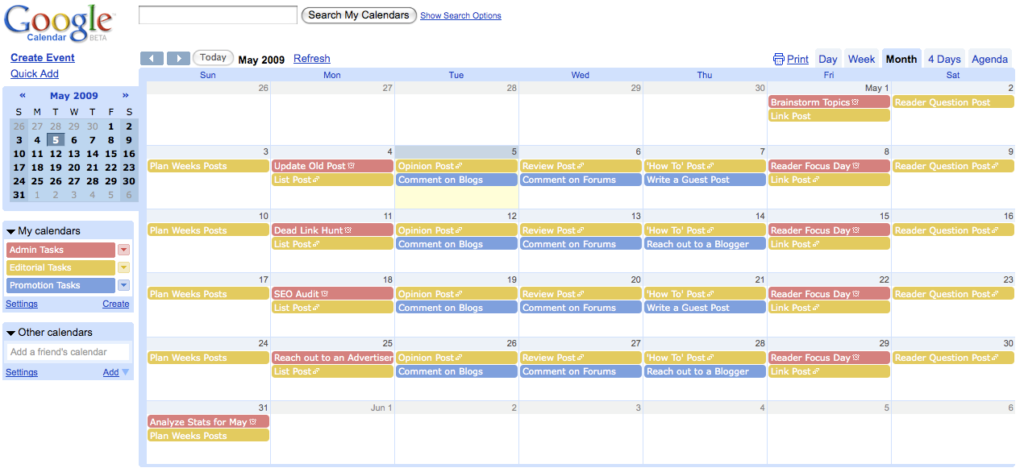Introduction
Consistency is key to successful blogging. But without a plan, it’s easy to miss deadlines, run out of ideas, or feel overwhelmed. That’s where a blog content calendar comes in.
A content calendar helps you organize your ideas, schedule posts ahead of time, and stay on track—boosting your productivity and growing your audience.
This guide shows you how to create a blog content calendar that fits your style and helps you publish regularly.
Step 1: Decide on Your Posting Frequency
Start by choosing how often you want to publish new posts.
- Beginners: 1–2 posts per week is a good target
- More experienced bloggers: 3–5 posts per week
Consistency is more important than quantity, so pick a schedule you can realistically keep.
Step 2: Choose Your Tools
You can use free tools like:
- Google Calendar – simple and accessible anywhere
- Trello – great for organizing ideas and workflow
- Notion – flexible for notes, calendars, and planning
Pick a tool that matches your comfort level and needs.
Step 3: Brainstorm Content Ideas
Gather ideas that fit your blog’s niche and audience.
- Use keyword research tools like Ubersuggest or AnswerThePublic
- Check competitors for popular topics
- Ask your audience what they want to read
Write down at least 20 ideas to start.
Step 4: Categorize Your Content
Organize your ideas into categories or themes, such as:
- How-to guides
- Product reviews
- Personal stories
- News or trends
This helps maintain variety and balance in your posts.
Step 5: Schedule Your Posts
Assign each topic a publishing date.
- Consider seasonal events or holidays relevant to your niche
- Space out similar topics to keep your blog fresh
- Allow extra time for research or guest posts
Mark deadlines clearly in your calendar tool.
Step 6: Plan Promotion and Updates
Your calendar should also include:
- Social media promotion dates
- Email newsletter sends
- Dates for updating old posts
This ensures your content gets the attention it deserves.
Step 7: Review and Adjust Regularly
At the end of each month, review your calendar.
- Which posts performed well?
- Which topics got less engagement?
- Adjust your plan based on what works
Flexibility helps you stay relevant and motivated.
Conclusion
A blog content calendar is a simple but powerful tool to keep you organized and consistent. It reduces stress, improves quality, and helps grow your blog audience over time.
Start with a basic calendar today and build habits that lead to blogging success.

